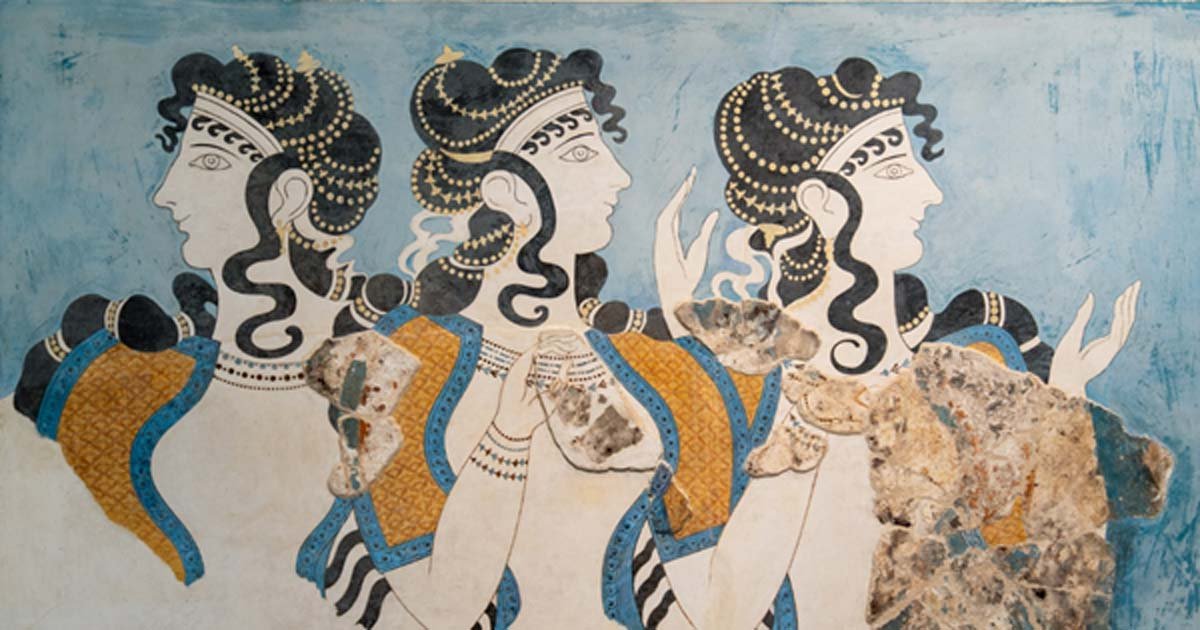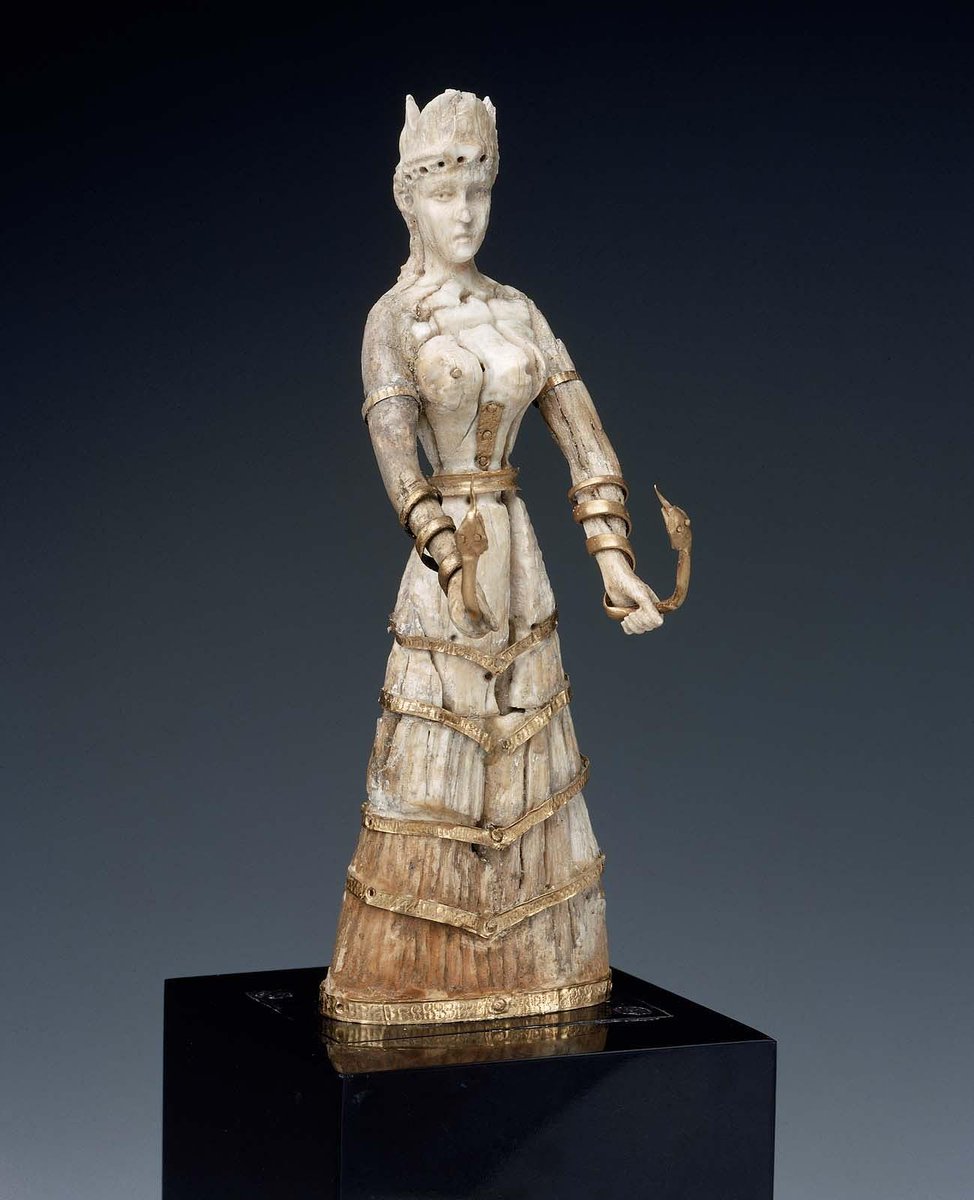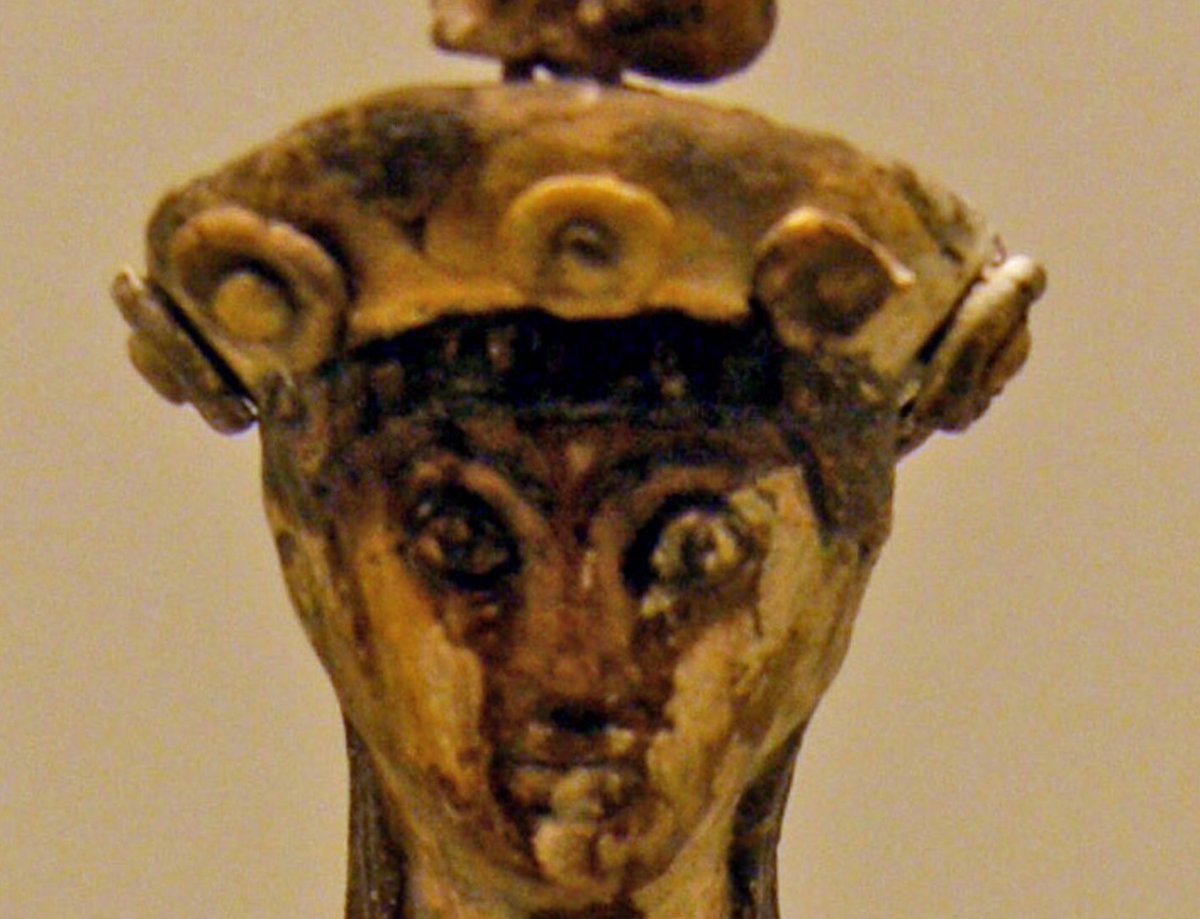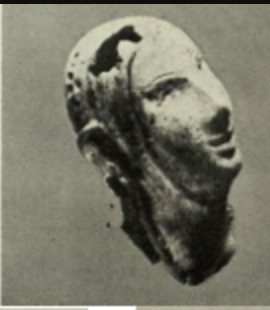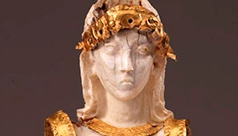Been thinking a lot about the Minoans. Everyone loves the Minoans, right? (If you love the Minoans, you& #39;re not going to like this thread.)
So, I& #39;m reading this book. I& #39;m only about 1.5 chapters in but there& #39;s already a LOT there (and I can& #39;t tell if the author is just relating or being subtly ironic). https://www.amazon.com/Mysteries-Snake-Goddess-Forging-History/dp/0306813289">https://www.amazon.com/Mysteries...
So, the author focuses on the (now--I believe--pretty thoroughly debunked) Boston Goddess, a supposedly Minoan ivory figurine of a snake-handling woman.
She was an absolute SENSATION when she was first displayed.
She was an absolute SENSATION when she was first displayed.
Sir Arthur Evans, the most famous archaeologist of the Minoan civilization, dubbed her the "Minoan ambassadress to the New World."
She made a 1967 issue of Mademoiselle& #39;s list of "art sensations" alongside Rembrandt, Picasso, and Rodin.
She made a 1967 issue of Mademoiselle& #39;s list of "art sensations" alongside Rembrandt, Picasso, and Rodin.
The Museum& #39;s monthly bulletin for Dec 1914 proclaimed her an icon of a "wonderful prehistoric civilization which, after having lain submerged, like the lost Atlantis, for three thousand years, has been brought to light again..."
A comparison to Atlantis here is telling.
A comparison to Atlantis here is telling.
Victorian "race science" and Victorian occultism were inextricably linked, the latter demonstrating a passion for interpreting the myths of non-European cultures to reflect the ideas of the former. (Its descendants live on as Ancient Aliens theories, etc.)
So, as archaeology became more popular and contact with ancient, sophisticated, and enduring civilizations such as those in India and China increased, white Europeans (esp the Brits) and Americans started to get uncomfortable.
So they started coming up with theories that hey, those people in the East who built all that amazing stuff, who were the "cradle of civilization," who invented the alphabet, they must have been taught by an even OLDER white civilization, now lost.
Hence the passion for stories about Atlantis and other lost continents.
It just couldn& #39;t be true that those non-Europeans were building bigger, more sophisticated civilizations long before most (northern) European civilizations built recognizable cities at all.
It just couldn& #39;t be true that those non-Europeans were building bigger, more sophisticated civilizations long before most (northern) European civilizations built recognizable cities at all.
Anyway, that longing for proof of ancient European cultural superiority was in the air when excavations of Minoan sites began.
Back to the Boston Goddess.
Back to the Boston Goddess.
Actually, before I get back to that figurine specifically, a note on the pop culture perception of the Minoans:
an ancient Greek culture with sophisticated, surprisingly modernist art, and extremely sophisticated technology like running water, who were lovers of beauty and art
an ancient Greek culture with sophisticated, surprisingly modernist art, and extremely sophisticated technology like running water, who were lovers of beauty and art
Now, back to the Boston Goddess.
Lacey Caskey, writing for the museum, noted that the statuette& #39;s distinctive posture "seems not to have been an artistic convention, but a feature of the actual appearance of this aristocratic race."
Lacey Caskey, writing for the museum, noted that the statuette& #39;s distinctive posture "seems not to have been an artistic convention, but a feature of the actual appearance of this aristocratic race."
And Lapatin observes, in the book, that "Minoan civilization was all the rage, for it seemed to provide Europeans with not only the roots of the "Golden Age of Greece," long considered the foundation of Western culture, but also a sophisticated early society in its own right...
"...a rival to the & #39;Oriental& #39; cultures of ancient Egypt and Mesopotamia--known as the cradle of civilization..."
Victorian occultists, of course, tended to claim that their practices were derived from ancient Egyptian or Chaldean rituals.
Victorian occultists, of course, tended to claim that their practices were derived from ancient Egyptian or Chaldean rituals.
And again, even as they attempted to partake of the antiquity and sophistication of those cultures, they were also trying to prove that white people, or at least divine beings, rather than non-Europeans, built them.
(It& #39;s always been a bit ironic to me that the Victorians clung to the idea of the superiority of Greece and Rome as the foundation for their ideas of the superiority of white people, while considering contemporary Greeks and Italians not fully white, but I digress.)
And lest you think that I& #39;m hammering too hard on this point, some of the most prominent descriptions of Evans& #39; finds praised the Minoan frescoes as "the Oldest Masters," and his work as proving the culture "bid fair rival to those of the Orient, and to give European...
"...Civilization an undreamed of antiquity."
It& #39;s hard to overstate the degree to which the archaeological motivation here was European insecurity.
It& #39;s hard to overstate the degree to which the archaeological motivation here was European insecurity.
And why was the Boston Goddess herself such a sensation? Her "exquisite characterization of fragile beauty," her "delicate, high-bred beauty." She is "demure," and "full of resolute charm."
Or, to be more explicit, her face has also been described as "Anglo-Saxon," "European-looking," "Victorian," "Edwardian," and "Parisienne."
Professor Ernest Gardner, at Yale, described her head as "recall[ing] rather than sculptures of Gothic cathedrals of the thirteenth centuries."
To understand what they& #39;re talking about, here are some faces from figurines that, as far as anyone can tell, are actually from Crete, c. 1500-1200 BCE.
On the other hand, here& #39;s the face of a "Minoan" goddess figurine from the Royal Ontario Museum.
You can read more about her here: https://www.rom.on.ca/en/blog/the-rom-minoan-goddess-the-suspect-sisters-and-brothers">https://www.rom.on.ca/en/blog/t...
So, to cut to the chase, eventually they did radiocarbon testing on the Boston Goddess, and the ivory was found to date from between 1420 and 1635 CE.
(Not BCE. CE. As in the Renaissance.)
A similar figurine, the Seattle Boy God, is made from ivory that& #39;s about 500 years old.
(Not BCE. CE. As in the Renaissance.)
A similar figurine, the Seattle Boy God, is made from ivory that& #39;s about 500 years old.
What do these proven and suspected fakes have in common? Well, among other things, their very Victorian facial features. Inset eyes, small pouty mouths, delicate noses.
Gotta run, but when I return to this, Minoan writing and Arthur Evans.
Point being, there are reasons why the Minoans were such an archeological craze, and those reasons are highly political.
Point being, there are reasons why the Minoans were such an archeological craze, and those reasons are highly political.
And because of the ways in which a very specific agenda shaped it, fakes that showed people what they wanted to see were accepted as real (and in some cases, are still sort of accepted as real), and we can& #39;t trust a lot of what we supposedly "know."
Continued here in Pt. II: Where the hell did this statue come from? https://twitter.com/Delafina777/status/1217975379039637504">https://twitter.com/Delafina7...

 Read on Twitter
Read on Twitter